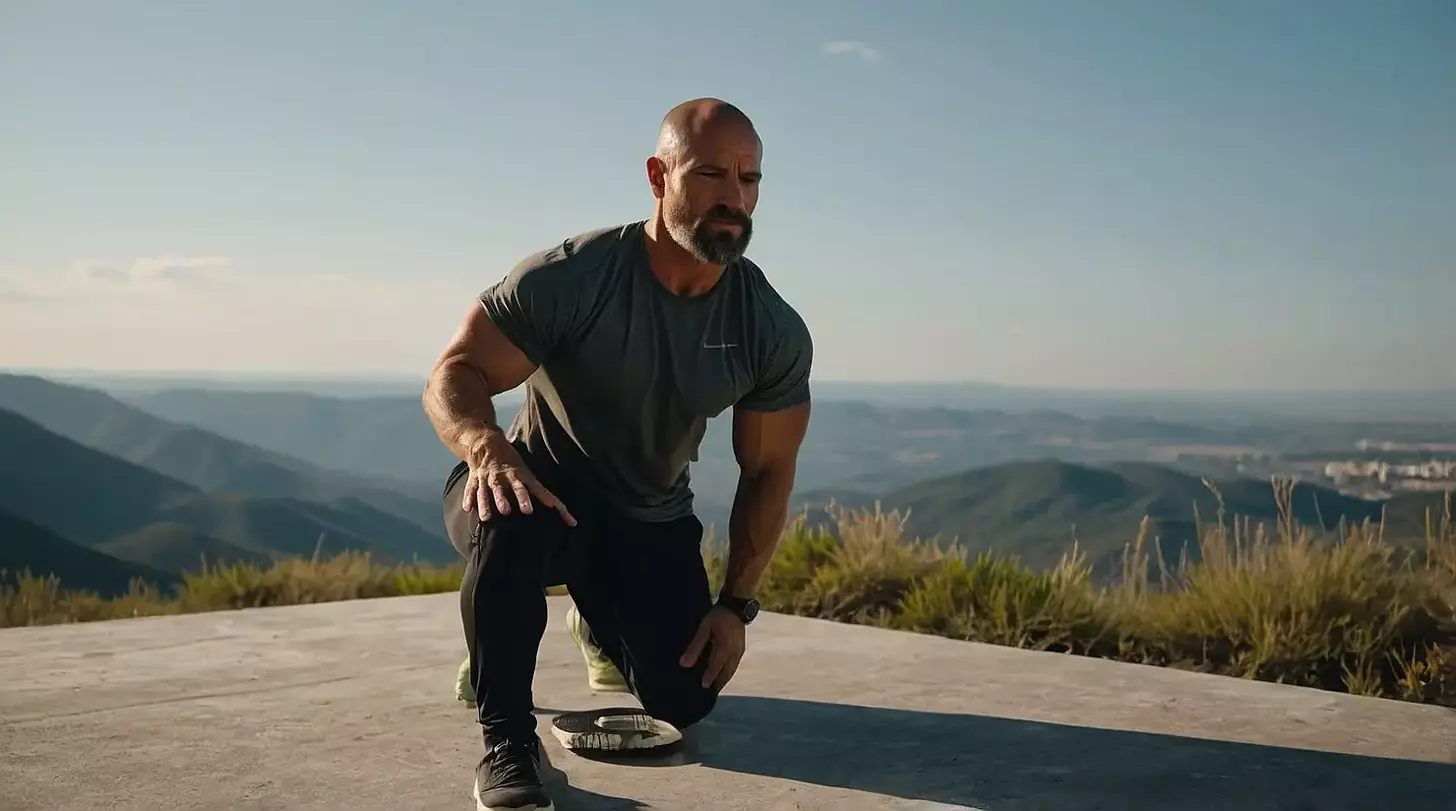Ever thought about how your core flexibility affects your overall mobility and performance?
The core muscles, from the ribcage to the pelvis, are key for stability and smooth movement. Doing core flexibility exercises can boost your flexibility, improve how you move, and help prevent injuries from a weak core.
This article covers important core flexibility exercises to help with mobility and stability. It shows why flexibility training is crucial and shares easy ways to add it to your daily life. These exercises are great for athletes or anyone wanting to move better and stay healthy.
Key Takeaways about Core Flexibility Exercises
- Strong core flexibility enhances mobility and reduces injury risk.
- Regular stretching is vital for optimal muscle function and posture.
- Incorporating flexibility training into workouts is essential for overall physical performance.
- Engaging in core flexibility exercises targets multiple muscle groups simultaneously.
- Consult a healthcare provider if pain or mobility issues persist.
- Aim for at least two to three stretching sessions per week for optimal results.
Understanding the Importance of Core Flexibility
Core flexibility is key to overall strength and stability. It helps move forces smoothly during activities, making joints like the hips and shoulders more stable. Without it, muscles get unevenly tight, leading to bad movements and injuries.
Doing specific mobility exercises is a must for better flexibility. These exercises help loosen tight muscles, especially for those who sit a lot. They can make you move better and perform sports tasks with less chance of getting hurt.
These exercises include both static and dynamic stretches. Static stretches help increase flexibility and relax muscles when held for 15 to 30 seconds. Experts suggest doing these exercises two to three times a week for best results.
Using tools like foam rollers and resistance bands can make these exercises even better. By focusing on core flexibility, you gain many health and performance benefits. For more tips and exercises, check out targeted core workout routines.
Benefits of Core Strength and Flexibility
A strong and flexible core is key for good health. Core exercises like crunches and planks make moving easier and safer. They help prevent back and hip pain by making your body stable.
Being flexible is also crucial. It lets you move freely and helps you stand up straight, which is important for desk jobs or repetitive tasks. A flexible core keeps your spine in line and lowers the risk of getting hurt.
Adding core stability exercises to your workout routine boosts your performance in sports and daily activities. Studies show that exercises like the superman and side plank help with back pain. They keep you stable, which is important as you get older.
Doing core exercises regularly makes everyday tasks easier. It helps with lifting and twisting. Experts say do one set of 12 to 15 reps for best results. This not only helps in sports but also makes life better overall.
| Exercise | Target Muscles | Benefits |
|---|---|---|
| Abdominal Crunches | Abdominals | Strengthens the core |
| Bridge | Back, Glutes | Enhances stability and posture |
| Modified Plank | Core | Improves strength and endurance |
| Superman | Lower Back | Stabilizes the back muscles |
| Side Plank | Obliques | Challenges and strengthens lateral stability |
| Bird Dog | Core, Back | Enhances coordination and stability |
Adding these exercises to your workout routine has big benefits for your body. It helps with fitness and overall health. For more info on core exercises, check out this resource.
Core Flexibility Exercises for Enhanced Mobility
This section shows exercises to improve core flexibility and mobility. Doing specific core exercises can boost performance and lower injury risks. These exercises focus on strength and length, which is key for everyday tasks and sports.
Turkish Get Ups for Multi-Plane Movement
The Turkish Get Up is great for moving shoulders and hips. It requires coordination and strength, moving through different positions. This helps engage both the upper and lower body. Adding this to your workout routine can improve your mobility and strength.
Half-Kneel to Split Stance with Pallof: Engaging Glutes and Obliques
This exercise works on glutes and obliques, helping with stability and flexibility. It trains the body to stay upright and resist rotation. This is vital for many sports and everyday activities.
Dying Bug with Pullover and Crunch: Stabilizing the Core
The Dying Bug with Pullover and Crunch focuses on core stability, important for dynamic movements. It boosts flexibility and stability, leading to better movement skills. This exercise helps build strength for various physical activities.
Flexibility Training: Best Practices

Flexibility training is key to better physical performance and injury prevention. Knowing how often and how long to work out is crucial. This section will cover the best ways to improve your core flexibility and add effective strategies to your routine.
Frequency and Duration: How Often to Train
How often you should train depends on your needs. If you’re tight, daily sessions focusing on those areas can help. Adding core exercises to your current workout can also boost flexibility. Regular stretching helps reverse muscle shortening, reduces stiffness, and balances muscles, lowering injury risk.
To keep improving core flexibility, stretch where you feel tight or restricted. This approach helps prevent strains and injuries.
Combining Stability and Mobility: A Balanced Approach
A good flexibility program mixes stability and mobility exercises. This balance is key for a full core workout. It boosts flexibility and keeps major muscles supple.
Staying consistent improves muscle use during strength training, increases motion range, and betters exercise form. If you have joint pain or want specific relief, talk to a doctor before starting your flexibility training.
| Flexibility Training Benefits | Importance |
|---|---|
| Reduces risk of injury | Helps prevent strains and muscle imbalances |
| Improves range of motion | Enhances form during exercises |
| Increases muscle recruitment | Facilitates effective strength training |
| Combats tightness from daily activities | Maintains mobility as one ages |
| Promotes recovery | Reduces stiffness and achiness |
Essential Stretching Routines for Core Flexibility
Incorporating stretching routines is key for a flexibility program. These exercises boost core flexibility and help with overall mobility. By doing targeted stretches, people can get better flexibility and lower injury risks. The stretches below focus on key muscles for core flexibility.
Supine Figure Four Stretch: Targeting the Glutes
The Supine Figure Four Stretch works on glute tightness. You lie on your back, cross one ankle over the other knee, and pull that leg towards your chest. This stretch stretches the hip and gluteal muscles. These muscles support the pelvis and spine. Doing this stretch often can reduce tension and increase movement range.
Child’s Pose: Relaxing and Lengthening the Spine
Child’s Pose relaxes the spine and stretches muscles that extend the hips and spine. You kneel and stretch your arms forward on the ground. This stretch is good for spine health and flexibility. It helps with better movement through the hips and torso.
Half-Kneeling Hip Flexor Stretch: Opening Up the Front of the Body
The Half-Kneeling Hip Flexor Stretch works on front body tightness. It stretches the hip flexors, important for movement and stability. By pushing your hips forward while kneeling, you improve core flexibility. This stretch also helps with a better range of motion, important for daily activities and sports.
| Stretch | Targeted Muscle Group | Benefits |
|---|---|---|
| Supine Figure Four Stretch | Glutes | Reduces tightness, enhances mobility |
| Child’s Pose | Spinal Extensors | Promotes relaxation, improves spine flexibility |
| Half-Kneeling Hip Flexor Stretch | Hip Flexors | Increases flexibility, opens front body |
Each stretch is key for easing tension. They help with a bigger range of motion, which boosts mobility and flexibility. Adding these core flexibility exercises to your routine can greatly benefit your daily life and fitness goals.
Core Strength Exercises Complementing Flexibility
This section talks about core strength exercises that work well with flexibility work. Adding core stability exercises to a flexibility routine helps improve posture and reduces injury risk. Certain exercises are especially good for this purpose.
90-90 Iso Holds: Building Core Stabilization
The 90-90 Iso Hold helps stabilize the core and build strength. By keeping this position, it reduces the chance of over-stretching, which is key in flexibility training. This exercise strengthens muscles, making a strong base for more core development.
Dead Bugs for Core Activation
Dead Bugs focus on keeping the core active and keeping the spine stable. This exercise is great for flexibility by using controlled movements. Adding Dead Bugs to a flexibility routine makes core training more effective. It also promotes proper alignment and stability.
The Role of Mobility Exercises
Mobility exercises are key for staying fit and boosting athletic performance. They help increase joint movement and keep the core stable. The Bird Dog and the Plank with Knee Drive are two exercises that help with this.
By doing these exercises often, you improve core stability, coordination, and flexibility. This makes you more agile and less likely to get hurt.
Bird Dog for Coordination and Core Stability
The Bird Dog exercise is great for improving coordination and keeping the core stable. It helps balance your body and limbs as you move. This makes your core work harder, which helps with stability.
Adding the Bird Dog to your workout routine can make you more mobile and lower your risk of injury.
Plank with Knee Drive for Dynamic Core Engagement
The Plank with Knee Drive is another good exercise for mobility. It works your core and improves how well your joints move. This exercise needs coordination between your upper and lower body, making you better in sports.
Putting exercises like the Plank with Knee Drive in your workout helps build a strong base for strength and sports performance.
Flexibility Workouts to Improve Range of Motion
Flexibility workouts help increase how far you can move. They should be a key part of your fitness plan. Doing these workouts makes you more flexible and helps with core strength. This mix helps you perform better and be more adaptable in sports and daily activities.
Integrating Flexibility with Strength Training
Adding flexibility exercises to strength training has big benefits. Many strength workouts can include flexibility moves. For example, Pilates combines core strength with stretching. This makes it great for working out many muscles and keeping you flexible.
Movements that stretch and strengthen muscles are key. They keep muscles flexible and help prevent injuries.
Creating a Consistent Flexibility Program
Having a regular flexibility routine is key for getting better. Doing these workouts often helps fight the loss of muscle flexibility as you age. Adding dynamic stretches before working out boosts your performance in all activities.
Using tools like foam rollers also helps with muscle function and eases tightness. This shows why sticking with a flexibility plan is important.
- Engaging in routine flexibility workouts can lead to:
- Enhanced mobility.
- Reduced risk of joint pain.
- Better muscle coordination during core strength workouts.
- Improved posture and balance.
Staying active with flexibility exercises helps you reach your fitness goals. By mixing flexibility with strength training, you keep improving and don’t get stuck. This keeps your fitness level growing over time.
Preventing Injuries through Core Stability Exercises
Core stability exercises are key to preventing injuries. They help set up the right movement patterns. A strong core keeps athletes in the right form during activities, lowering injury risks.
This section talks about how knowing about movement patterns can guide training.
Understanding Compensations in Movement Patterns
Compensations happen when muscles work the wrong way to move. They often come from a weak core, leading to bad alignment and more injuries. For instance, a weak core can lead to knee injuries like ACL tears.
Core stability exercises are vital for avoiding injuries. They help fix bad movement patterns that cause extra strain. Training the core reduces these issues and boosts movement efficiency.
The Impact of Weak Core on Joint Stability
A weak core hurts joint stability, making injuries more likely. The core helps the deep muscles that keep the spine and pelvis stable. A good core training program works these muscles hard.
This helps keep joints stable during active movements. Better core stability means better movement control. It helps with sports and everyday activities. Fixing core weaknesses is key for staying active and injury-free.
Conclusion
Core flexibility exercises are key for better health, more mobility, and injury prevention. They help improve physical skills and stability. This is especially true for those with low back pain, as core exercises can help reduce pain.
Studies show that core strength is vital for better movement. A review of core exercises found they helped 275 patients feel less pain and move better. This proves the value of making these exercises a part of daily life.
By focusing on core flexibility, you make your body more functional and healthy. Sticking with these exercises will strengthen your core, improve your mobility, and lower injury risks. This lets you enjoy all parts of life more fully.
Unlock your full potential with our ultimate core workout guide!
Dive into the details here: Prime For Men’s Core Workout and transform your fitness journey.
FAQ about Core Flexibility Exercises
What are core flexibility exercises?
Core flexibility exercises help make the core muscles more flexible. They improve how we move and perform physically. They make it easier to transfer force and keep joints stable.
How can I improve my core flexibility?
To get better core flexibility, mix core strength, mobility, and stretching exercises into your routine. Doing these exercises regularly will boost your movement range and help avoid injuries.
What are some effective flexibility training exercises?
Good exercises for flexibility include the Supine Figure Four Stretch, Child’s Pose, and Turkish Get Ups. These exercises boost flexibility and help with core strength and stability.
How often should I incorporate flexibility workouts?
Try to do flexibility workouts two to three times a week. This depends on your goals and how flexible you are now. Regular practice will improve your flexibility and mobility.
Are mobility exercises important for core stability?
Yes, mobility exercises are key for core stability. Doing exercises like Bird Dog and Plank with Knee Drive helps improve coordination and core engagement. This leads to better performance.
Can core flexibility exercises help prevent injuries?
Absolutely. These exercises prevent injuries by fixing tightness and imbalances in the body. They help with correct movement and make joints more stable during activities.
What is the difference between core strength exercises and core stability exercises?
Core strength exercises focus on building muscle in the core. Core stability exercises work on keeping proper alignment and control while moving. Both are important for fitness and avoiding injuries.
How do I create a flexibility program that fits my needs?
To make a flexibility program for you, look at your current flexibility, set fitness goals, and pick exercises that meet your needs. Choose a mix of core flexibility, mobility, and stretching exercises. Being consistent is important!



